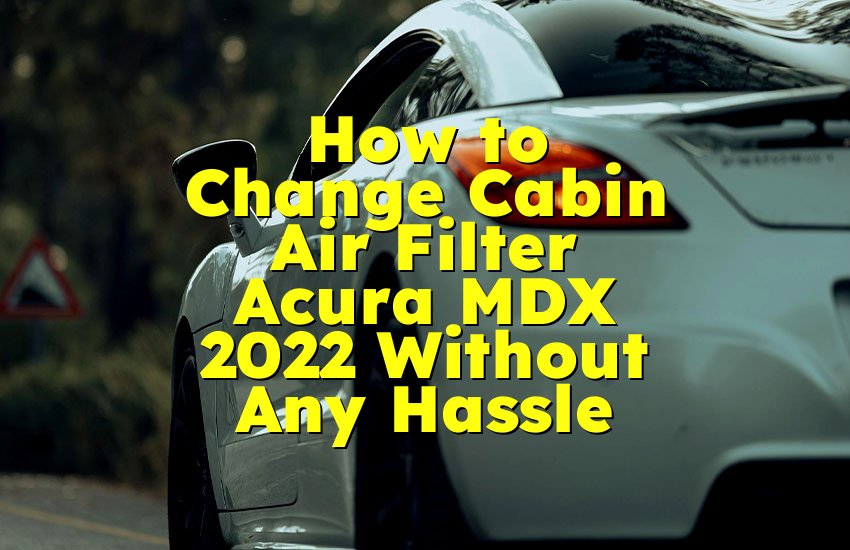As an Amazon Associate, I earn from qualifying purchases at no extra cost to you.
Back Wheel Bearing Replacement Cost: What You Need to Know
Hey there! So, your car's making that annoying humming or grinding noise, and you're wondering if it's the wheel bearing? Been there! Let's chat about back wheel bearing replacement costs. I'll break it down in a way that's easy to understand, so you know what to expect at the shop. From parts to labor, we'll cover it all, and I'll share some tips to save a few bucks. Ready? Let's dive in!
Understanding Wheel Bearings and Why They Matter
Wheel bearings are small but mighty components in your car. They let your wheels spin smoothly while supporting the vehicle's weight. When they wear out, you'll hear noises like humming, grinding, or even a low growl, especially from the back wheels. Ignoring them? Bad idea—it can lead to wheel wobble or, worse, a wheel coming loose. So, let's talk about what goes into replacing those back wheel bearings and why it's not a cheap fix.
What Exactly Is a Wheel Bearing?
A wheel bearing is a set of steel balls or rollers held together by a metal ring, packed with grease to reduce friction. In modern cars, back wheel bearings are often sealed units, meaning you replace the entire hub assembly rather than individual parts. This makes the job easier but pricier. Rear wheel bearings take a beating from road conditions, potholes, and heavy loads, so they wear out over time, typically lasting 85,000 to 150,000 miles.
Signs Your Back Wheel Bearing Needs Replacement
How do you know it's time? Listen for a humming or grinding noise that gets louder with speed. You might also feel vibrations in the steering wheel or notice uneven tire wear. If you jack up the car and wiggle the wheel, any play or looseness is a red flag. These symptoms mean the bearing's failing, and replacing it sooner rather than later prevents damage to other parts, like the axle or brakes.
Why Replacement Costs Vary
The cost of replacing a back wheel bearing depends on several factors. First, the car's make and model—luxury or performance vehicles often have pricier parts. Second, labor rates differ by region and shop type (dealerships charge more than independents). Third, whether you need just the bearing or the whole hub assembly impacts the bill. On average, expect to pay $200 to $600 per wheel, with parts costing $100 to $300 and labor $100 to $300.
DIY vs. Professional Repair
Can you replace it yourself? If you're handy with tools, you might save on labor, but it's not a beginner job. You'll need a jack, stands, torque wrench, and possibly a press to remove the old bearing. Mistakes can damage the hub or axle, costing more in the long run. For most folks, a professional mechanic is the safer bet, ensuring the job's done right and backed by a warranty.
Breaking Down the Costs of Back Wheel Bearing Replacement
Let's get into the nitty-gritty of what you'll pay. Back wheel bearing replacement isn't cheap, but understanding the costs helps you avoid surprises. From parts to labor, and even hidden fees, I'll walk you through what's driving that repair bill and how to keep it as low as possible without cutting corners.
Cost of Parts
The biggest chunk of the cost is the wheel bearing or hub assembly. For a standard sedan, a quality bearing costs $100 to $200. For trucks, SUVs, or luxury cars like BMWs or Audis, expect $200 to $300 or more. OEM (original equipment manufacturer) parts are pricier but often recommended for better fit and longevity. Aftermarket options can save money but vary in quality, so check reviews or ask your mechanic for trusted brands.
Labor Charges
Labor is where things add up fast. Replacing a back wheel bearing takes 1 to 3 hours, depending on the car's design. At $100 to $150 per hour, that's $100 to $450 in labor. Dealerships often charge higher rates, while independent shops might offer better deals. Some cars have tricky setups, like integrated sensors or sealed hubs, which increase labor time. Always ask for a labor estimate upfront to avoid sticker shock.
Additional Costs to Watch For
Don't be caught off guard by extras. Shops may charge for:
- Diagnostic fees ($50 to $100) to confirm the issue.
- Alignment checks ($75 to $150) since bearing issues can mess with wheel alignment.
- Shop supplies or disposal fees ($10 to $50).
If the bearing failure damaged other parts, like the brake rotor or axle, repairs could climb higher. Always request a detailed breakdown of the quote before work starts.
Tips to Save Money
Want to keep costs down? Shop around for quotes from multiple mechanics—prices can vary by hundreds. Consider independent shops over dealerships for lower labor rates. If you're buying parts yourself, compare prices online but stick to reputable brands. Ask if the shop offers warranties on parts and labor (many do for 12 months or 12,000 miles). Finally, address the issue early—delaying can lead to pricier repairs if the bearing damages other components.
Choosing the Right Mechanic and Avoiding Scams
Picking a mechanic is just as important as understanding costs. A good shop saves you money and stress, while a shady one can overcharge or botch the job. Let's talk about how to find a trustworthy mechanic, what to ask, and how to spot red flags so you're not taken for a ride.
How to Find a Reputable Mechanic
Start by asking friends or family for recommendations—word-of-mouth is gold. Check online reviews on sites like Yelp or Google, but focus on patterns, not one-off complaints. Look for shops certified by organizations like ASE (Automotive Service Excellence), which signals trained technicians. Independent shops often provide personalized service, but dealerships are a good choice for specialized vehicles. Call around and compare quotes, but don't just go for the cheapest—quality matters.
Questions to Ask Your Mechanic
Before handing over your keys, ask:
- What's included in the quote (parts, labor, extras)?
- Are you using OEM or aftermarket parts?
- How long is the warranty on parts and labor?
- Can you show me the old bearing after replacement?
A good mechanic will explain the process clearly and provide a written estimate. If they dodge questions or push unnecessary repairs, that's a red flag.
Avoiding Common Scams
Some shops inflate costs or suggest unneeded work. Watch out for:
- Vague diagnoses like "it's just worn out" without specifics.
- Pressure to replace both sides when only one bearing is bad.
- Unexpected "emergency" repairs added mid-job.
To protect yourself, get a second opinion if the quote seems high. Insist on seeing the old parts post-repair to verify the work was done. If possible, stay in the loop during the repair process—reputable shops welcome transparency.
Building Trust with Your Mechanic
A long-term relationship with a mechanic pays off. Once you find a good one, stick with them for routine maintenance. They'll get to know your car's history, which helps with accurate diagnoses. Be upfront about your budget and ask for cost-saving options, like aftermarket parts or refurbished hubs. A trustworthy mechanic will work with you to balance quality and affordability, ensuring your car stays safe on the road.
I hope this guide makes back wheel bearing replacement costs less daunting! From spotting the signs to picking a mechanic, you're now ready to tackle this repair with confidence. Save where you can, but don't skimp on quality—your safety's worth it. Drive safe!
Frequently Asked Questions (FAQs)
Is it safe to drive with a bad wheel bearing?
Driving with a bad wheel bearing is risky. The humming or grinding noise means the bearing's failing, which can cause wheel wobble or, in extreme cases, the wheel to seize or detach. This could lead to loss of control, especially at high speeds. Get it checked ASAP—most mechanics recommend replacing it within a few weeks of noticing symptoms. Delaying can also damage your axle or brakes, spiking repair costs. Prioritize safety and address it quickly.
Can I replace just one wheel bearing?
Yes, you can replace just one wheel bearing if only one is damaged. Mechanics often suggest checking the other side for wear, but it's not mandatory to replace both unless there's evidence of failure. That said, if your car has high mileage, replacing both rear bearings at once might save on future labor costs. Ask your mechanic to inspect all wheels and give you a clear recommendation based on their condition.
Do I need an alignment after replacing a wheel bearing?
An alignment isn't always required, but it's often recommended. A failing wheel bearing can cause uneven tire wear or pull, which misaligns your wheels. Many shops suggest a post-repair alignment (costing $75 to $150) to ensure proper handling and tire longevity. If your car drives straight and tires look fine, you might skip it, but ask your mechanic to check alignment during the repair to avoid future issues.
Is it cheaper to do the replacement myself?
DIY replacement can save $100 to $300 in labor, but it's not easy. You'll need tools like a jack, torque wrench, and possibly a bearing press, plus mechanical know-how. Parts cost $100 to $300, and mistakes can damage your car, leading to pricier fixes. If you're not experienced, a professional is safer, ensuring the job's done right with a warranty. Weigh your skills and tools before deciding.
Can I use aftermarket parts for the repair?
Aftermarket parts are often cheaper than OEM, costing $50 to $150 less. They can work well, but quality varies. Stick to reputable brands like Timken or SKF, and check reviews. Some mechanics warn that low-quality aftermarket bearings wear out faster, leading to another replacement sooner. Ask your mechanic for advice—they often know which aftermarket options match OEM performance without breaking the bank.
Do I need to replace the entire hub assembly?
In many modern cars, yes, the wheel bearing is part of a sealed hub assembly, so you replace the whole unit. This is pricier ($100 to $300) but simplifies the repair. Older cars might allow replacing just the bearing, which is cheaper but labor-intensive. Your mechanic will confirm what's needed based on your car's design. Always ask for a breakdown to understand why the hub assembly is recommended.
Is it normal for costs to vary by car make?
Absolutely, costs vary widely by make and model. Economy cars like Hondas or Toyotas have bearings costing $100 to $200, while luxury brands like Mercedes or performance cars like Porsches can hit $300 or more. Labor also depends on the car's complexity—some designs take longer to access. Always get quotes specific to your vehicle, and don't be surprised if pricier cars come with higher repair bills.
Can a bad wheel bearing affect fuel economy?
A failing wheel bearing can slightly reduce fuel economy. The extra friction from a worn bearing makes your engine work harder, especially at higher speeds. The impact is usually small, maybe a 1-2% drop in MPG, but it adds up over time. Replacing the bearing restores smooth wheel rotation, helping your car run efficiently. If you notice other issues like vibrations, get it fixed to avoid bigger problems.











